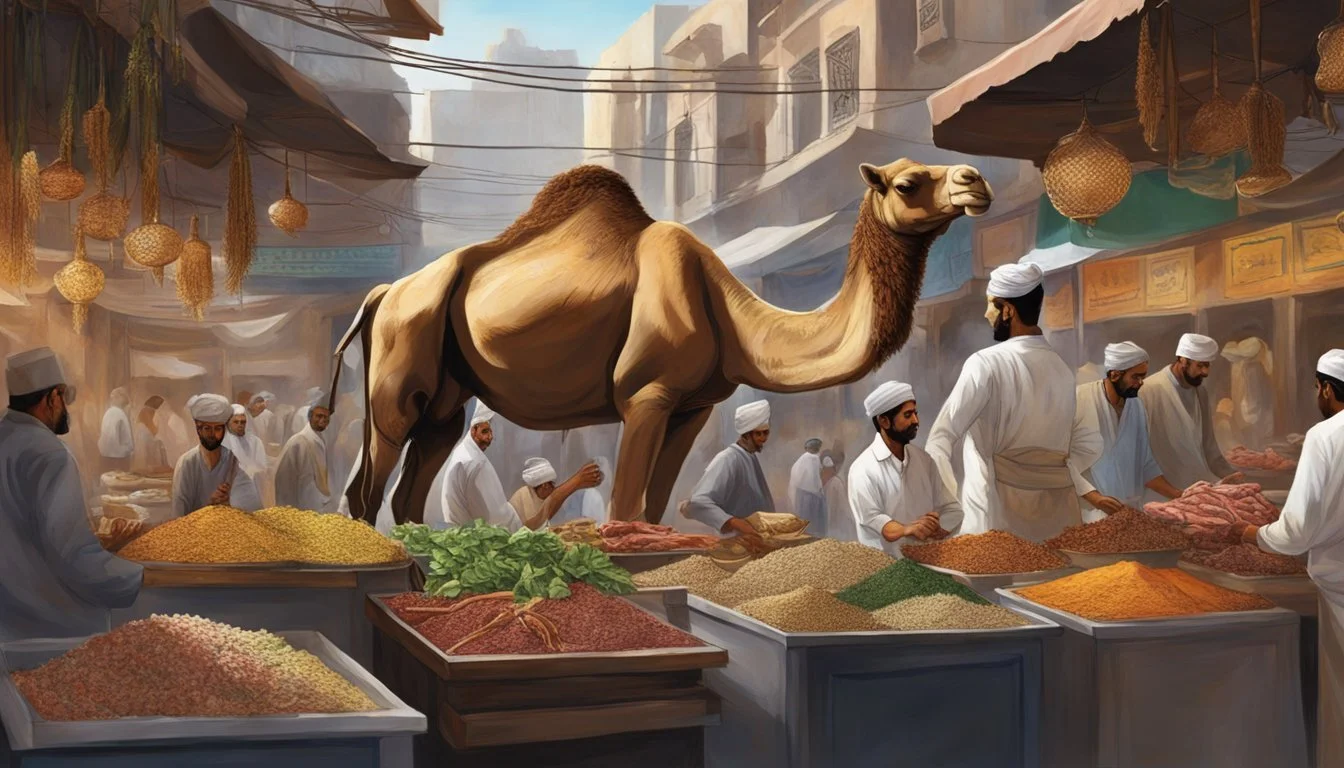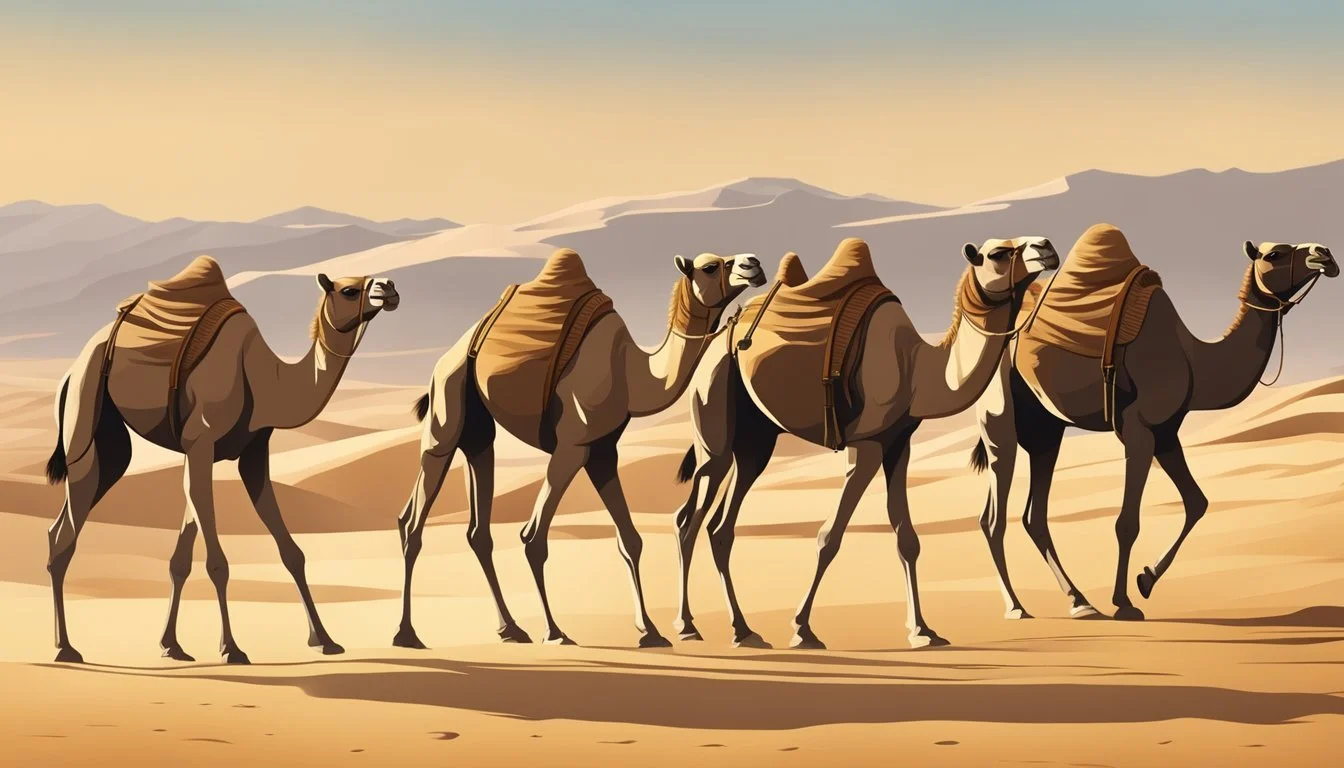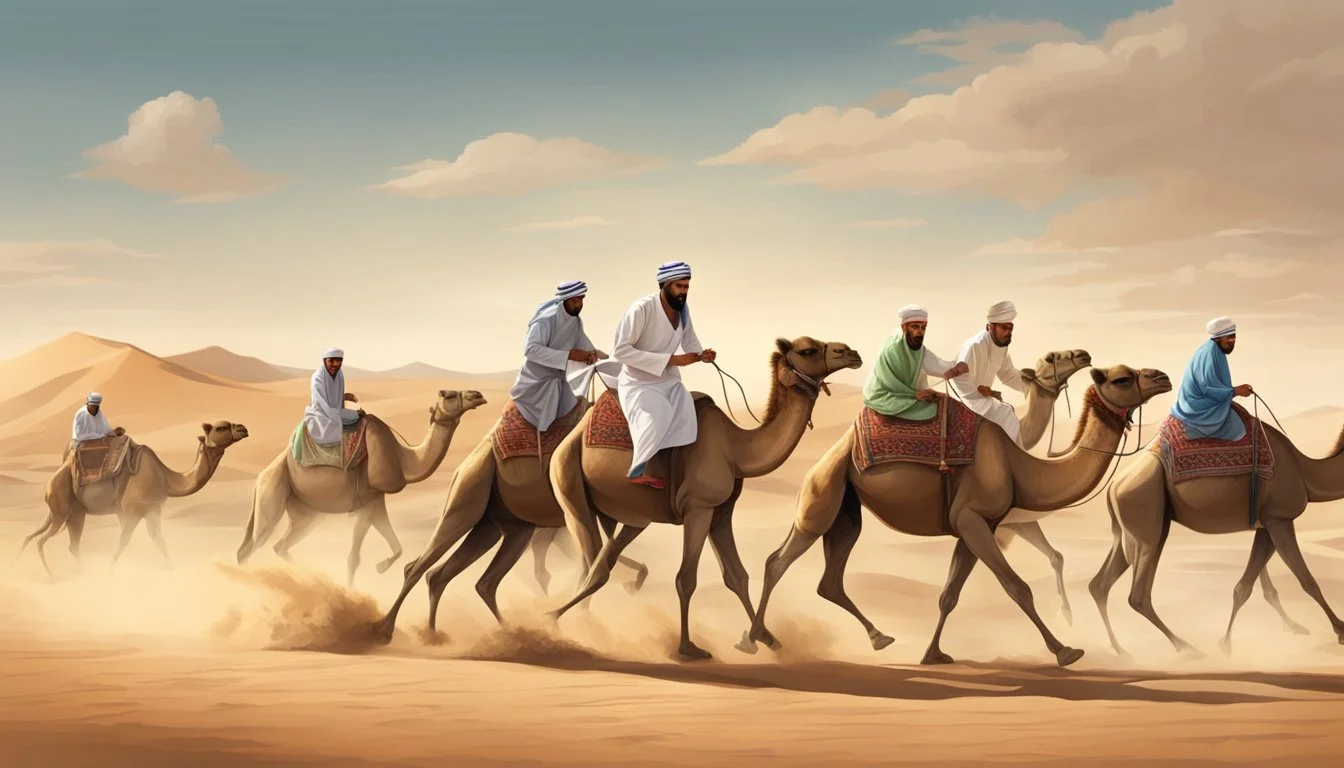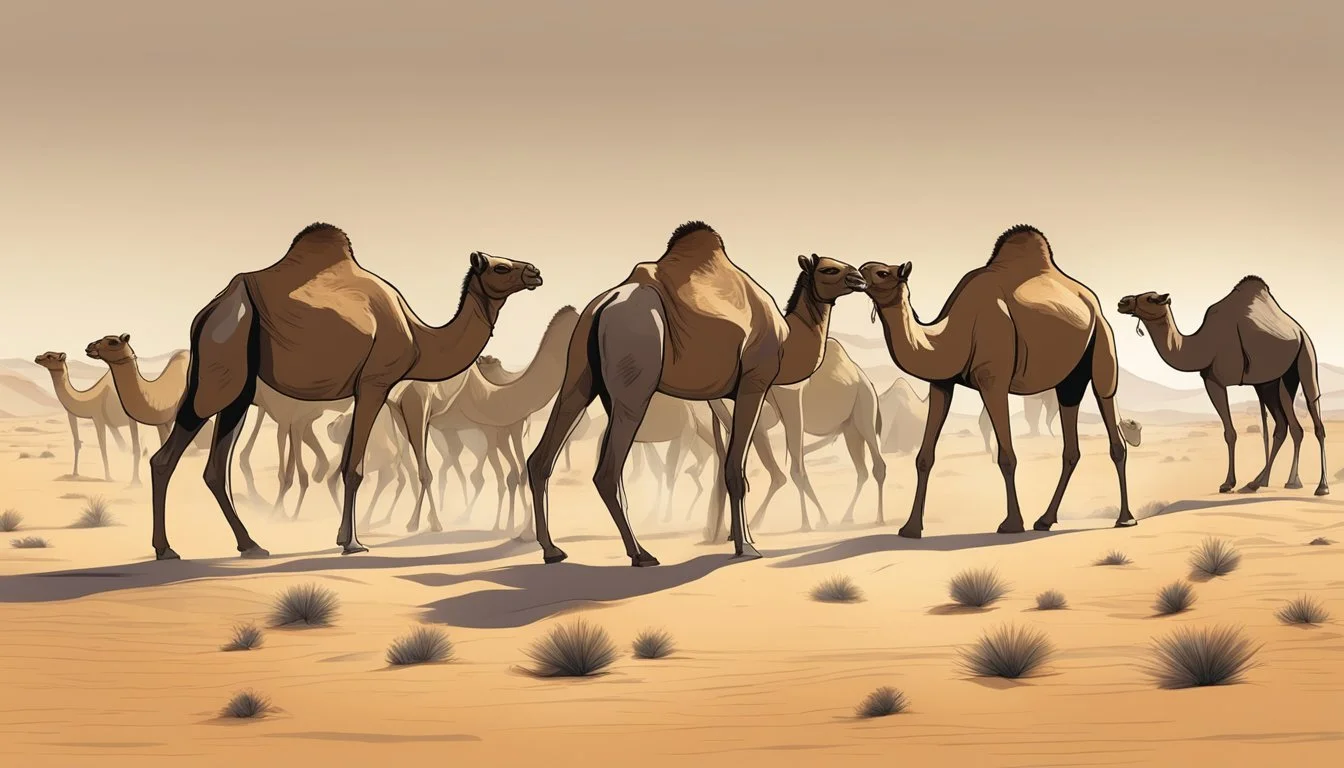Camel Meat
Unveiling a Desert Delicacy in Middle Eastern Gastronomy
In the vast stretches of desert that characterize much of the Middle East, one creature has emerged as a cornerstone of the regional cuisine: the camel. With its unique ability to traverse arid landscapes and survive in harsh conditions, the camel has been an essential part of Middle Eastern culture for centuries. Camel meat, a centerpiece in this culinary tradition, is considered a delicacy and is deeply interwoven with the heritage of the people.
Enjoyed for its rich flavor and nutritional value, camel meat is a staple food on many tables across the Middle East. Its consumption is not only a matter of sustenance but also a practice steeped in tradition. In the Bedouin diet, for example, camel meat is prized for its savory taste and is often reserved for festive occasions and significant celebrations. It underscores a sense of community and cultural identity through shared meals.
Middle Eastern cuisine showcases the versatility of camel meat through various preparations that highlight its distinct taste. From stews and grilled dishes (What wine goes well with grilled dishes?) to the more exotic, such as camel humps, these culinary methods reflect the diverse use of camels in the region. Alongside its dietary significance, camel meat's role in the desert regions extends to symbolizing hospitality and generosity, with its presence on the menu signaling respect and honor to guests.
Historical Significance of Camels
Camels have played a pivotal role in shaping the societies, economies, and religions of the Middle East. These resilient creatures significantly impacted ancient trade, military strategies, intercontinental connectivity, and the Islamic faith.
Camels in Ancient Trade and Transportation
Camels were the backbone of Middle Eastern commerce for centuries. Their ability to endure long distances and harsh desert conditions made them indispensable for caravans traversing the varied terrain of the region. Trade routes thrived due to the camel's carrying capacity, allowing for the exchange of spices, textiles, and goods between distant lands.
Major trade items transported by camel caravans:
Spices: Frankincense, myrrh, and others
Textiles: Silk, wool, and dyes
Goods: Gold, silver, and precious stones
Camels in Warfare and Military Contributions
In warfare, camels served as crucial assets in the armies of the Middle East. They provided a strategic advantage with their speed and maneuverability in combat, along with serving logistical roles to transport soldiers and supplies across desert battlefields.
Key military uses of camels:
Rapid troop movement: Enhanced mobility in desert warfare
Supply transport: Carrying arms and provisions for extended campaigns
Camels and the Silk Road Connectivity
The historical Silk Road, connecting the East and West, relied heavily on camels for the movement of goods and ideas. This vast network facilitated not only the trade of commodities but also the exchange of culture, technology, and knowledge, with camels at the center of this intercontinental dialogue.
Significant impacts on Silk Road connectivity:
Cultural Exchange: Spread of ideas, religion, and languages
Economic Growth: Boost in trade between empires
Camels in Islamic Culture and Religion
Camels hold deep religious significance in Islam, intertwined with the history and daily life of its followers. They are frequently mentioned in Islamic literature, including the Qur'an, symbolizing provision and divine favor. Moreover, camels were instrumental during the Islamic Golden Age, facilitating the spread of Islamic teachings and culture across the region.
Religious and cultural roles of camels:
Qur'anic References: Mentioned as a gift from God
Islamic Literature: Featured in stories and parables
Camel Domestication and Uses
Camel domestication significantly shaped the agricultural and social landscapes of Middle Eastern regions. These animals have been bred for various purposes, such as milk production, wool harvesting, and as reliable forms of transportation.
Breeding and Herding
Camels were first domesticated approximately 4,000 years ago in the Arabian Peninsula. Herding practices have evolved to select traits suitable for harsh desert climates, ensuring camels’ stamina and endurance. These herds have become a central part of Bedouin heritage, with specialized knowledge passed down through generations.
Camels as Source of Milk and Wool
Camel milk is a staple in many Middle Eastern diets, admired for its nutritional properties, including high levels of vitamins and minerals. The production of camel milk is a careful process, often overseen by communities that have developed these techniques over centuries. In addition to milk, camel wool is harvested for textiles, providing materials for clothing and other goods.
Camels for Riding and Labor
Renowned for their ability to carry heavy loads over long distances, camels have a historical role as pack animals. They are also trained for riding, with specific breeds favored for their speed and agility. The relationship between camels and humans in these contexts is a testament to the animals’ domestication and versatility in various aspects of labor and transportation.
Cultural Impact of Camel Meat in The Middle East
Camel meat has been interwoven with Middle Eastern culture for centuries, signifying wealth and tradition while influencing culinary practices and festivities.
Symbolism and Value in Society
In Middle Eastern culture, camels traditionally represent endurance and survival, elevating their status beyond mere animals to symbols of prosperity. Owning camels is a sign of wealth and status, with some societies even holding camel beauty contests. These events underscore the cultural significance of camels, reflecting their esteem in folklore and Middle Eastern art, where camel motifs are prevalent and often denote Islamic teachings and history.
Culinary Practices and Dishes
Camel meat is not only valued for its symbolic importance but also forms an essential part of the region’s food culture. Preparing and consuming camel meat is deeply rooted in tradition and hospitality. Recipes for camel meat are diverse, reflecting the various culinary techniques of different cultures within the Middle East. Dishes range from slow-cooked stews, which bring out the meat's tenderness and flavor, to delicacies like grilled camel ribs, showcasing the versatility of camel meat in Middle Eastern cuisine.
Camel Meat in Festivities and Celebrations
Camel meat is integral to major celebrations in the Middle East. It is often served during religious festivals like Eid, as well as on national days and at weddings, signifying hospitality and generosity. Serving camel meat is a gesture of sharing one's fortune with guests, reinforcing the animal's role as a tradition and status symbol within society. The act of sharing such a prized delicacy on special occasions further cements its place in the cultural heritage and collective identity of the Middle Eastern people.
Nutritional and Health Benefits of Camel Meat
Camel meat has been a staple in Middle Eastern diets for centuries, appreciated for its nutritional value and potential health advantages. It’s distinguished by its high protein content and low levels of fat, making it a beneficial red meat (What wine goes well with red meat?) alternative.
Comparison to Other Red Meats
When considered against other red meats, camel meat stands out for its nutritional profile. It boasts higher protein levels and lower fat content. The protein in camel meat is not only plentiful but also contains a balanced composition of amino acids.
Protein Content Comparison (per 100 grams):
Camel Meat: Approximately 20 grams
Beef: Typically ranges 14-20 grams
Lamb: Similar to beef, often 14-20 grams
Regarding fat, camel meat on average contains 8 grams of total fat and 4 grams of saturated fat per 100 grams, which is considerably lower than that found in beef or pork. This lean composition is one reason that individuals seeking healthier alternatives to traditional red meats often choose camel meat.
Potential Medicinal Properties
Camel meat's profile of fatty acids and its richness in vitamins and minerals may impart special health benefits. It is a source of B Vitamins known for supporting metabolism and energy production. In terms of minerals, it has a high iron content, which is crucial for preventing anemia and aiding in oxygen transport within the body.
Health benefits highlighted in research suggest camel meat's potential role in:
Improving heart health due to its low levels of saturated fat and cholesterol.
Providing essential nutrients that can support overall health, including vitamin B12 and minerals like zinc and potassium.
With these promising nutritional advantages and potential health benefits, camel meat is considered not just a traditional choice for some but a potentially wise choice for health-conscious consumers globally.
Preparation and Cooking Techniques
Camel meat, a staple food in the Middle Eastern region, requires careful preparation and cooking to bring out its distinct taste. Renowned for its lean yet succulent quality, camel meat lends itself well to various traditional recipes and contemporary culinary applications.
Traditional Recipes and Cooking Methods
Recipes: Traditional recipes often call for camel meat to be cut into stew-sized chunks or ground for kebabs. These pieces are typically marinated with a mix of spices including cumin, coriander, paprika, and cinnamon to tenderize the meat and infuse it with flavor.
Stew: A commonly featured dish is camel stew, which often begins with searing the meat to a rich brown color before slow-cooking it with onions, tomatoes, and regional spice blends.
Tharid: Another popular dish is Tharid, which layers pre-cooked camel meat over flatbread and is soaked with a flavorful broth.
Kebabs: For kebabs, the marinated meat is skewered and grilled over an open flame, turning until evenly cooked.
Cooking: To optimally prepare camel meat, it is important to cook it at the right temperature. When grilling, the meat should reach an internal temperature of 150°F (65°C), allowing it to rest before serving enhances tenderness.
Modern Culinary Innovations
Curry: Chefs have introduced camel meat into modern dishes such as curry, by simmering the meat in aromatic sauces that may include coconut milk and custom spice blends.
Ice Cream: Innovative uses even extend to desserts, where camel milk, an accompaniment to the meat, is used to create unique ice cream variants.
Preparation: Modern recipes often involve cubing the meat for easier handling and even cooking, particularly in dishes like curry where meat is cooked with various ingredients.
Boldly integrating camel meat into various cuisines, chefs continue to respect its traditional roots while exploring new culinary frontiers.
Camel Racing and Related Activities
Camel racing is an esteemed sport in the Middle East, deeply rooted in the region's cultural heritage. These events are spectacular gatherings that combine the thrill of racing with age-old traditions.
Modern Camel Racing Events
In contemporary Middle Eastern societies, camel racing is a well-organized sport that attracts enthusiasts and patrons from around the world. Major racing events often include camels that are specifically bred for speed and stamina. A typical event showcases:
Training: Camels undergo rigorous training regimes to compete effectively.
Jockeys: Originally manned by human jockeys, the sport has evolved to use lightweight, robotic jockeys for animal welfare concerns.
Technology: Advanced technologies for tracking and managing races are standard.
Venue Interaction: Spectators not only watch the races but may also participate in related festivities, which are integral to the experience.
Key Countries Involved:
Saudi Arabia
Bahrain
Qatar
UAE
These events serve as a significant source of entertainment and contribute to the cultural and economic landscapes of the hosting nations.
Camels in Competitive Sports
The use of camels in competitive sports is not confined solely to racing. While camel racing is the most high-profile competitive use of camels, the animals are also central to other lesser-known sports and competitive activities. These sports often test endurance, agility, and the bond between the camel and its handler. Such sports are seen as not just entertainment, but also as a celebration of the historical significance of camels in the region.
Examples Include:
Camel polo
Beauty contests
Agility courses
These activities reinforce the importance of camels in Middle Eastern societies, transcending their role from racing to a broader athletic context. Camels remain symbols of strength and endurance, playing a vital part in both competitive sports and the entertainment sector.
Conservation, Challenges, and Future of Camels
The sustainability of camel populations faces significant challenges due to environmental changes and the need for adaptive strategies to preserve their role in desert ecosystems and Middle Eastern cuisine.
Sustainable Practices and Environmental Concerns
Camels have long been integral to desert communities, serving not only as a source of food but as a key part of local economies and cultures. Sustainable practices are vital for maintaining camel populations in the face of environmental impact and changing land use. The use of camels for meat, as well as other products like milk, wool, and for transportation, requires careful management to prevent overexploitation and ensure that their use does not adversely affect the desert ecosystems they inhabit. Initiatives that prioritize responsible breeding, grazing, and water resource management contribute to the long-term viability of these practices.
Challenges: Rising temperatures and the degradation of natural habitats threaten the freshwater sources vital for camel survival.
Land Use: The competition between camels and agricultural expansion is growing, necessitating thoughtful planning and zoning to balance the needs of local wildlife and human populations.
Adaptation and Resilience in the Changing World
Camels are remarkable for their endurance and resilience, traits that enable them to withstand harsh desert conditions. However, the rapid pace of climate change poses a profound challenge to their ability to adapt. Conservation efforts must recognize the adaptive capabilities of camels—such as their ability to regulate body temperature and survive with limited water sources—while also addressing the increased stresses from a hotter, more arid climate.
Endurance: Camels' ability to thrive in extreme weather showcases their endurance but simultaneously emphasizes the necessity for conservation strategies to support their well-being in altered landscapes.
Resilience: Proactive measures, including research into camels' genetic traits and behaviors, can enhance understanding of how to bolster their natural resilience to environmental stressors.





